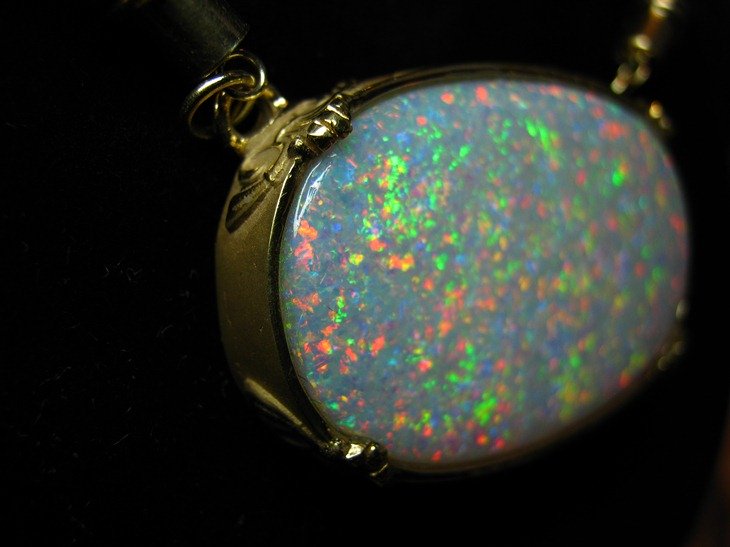The Amulet of the Bright
The Amulet of the Bright is named after one of the two moons of Alven. The Bright or The Shine burns much brighter in the skies than its brother The Shadow and is a fitting name for this jewel beyond compare.
The Amulet was given to the clans of Alven after the god Leweyd the Many-Ones lost a wager against Thane Moorstalk, ancient and great Thane of Alven. This famous deed happened at the dawn of the Alven Areas and of the three magical artifacts that were granted to Thane Moorstalk by the god Leweyd, only the Game Set of Leweyd The Many-Ones himself exists to this day. The other two artifacts: Magic Bag of the Lost and the Amulet of the Bright have, unfortunately, been lost during the last millennia.
Description
We only have the writings of a few ancient historians and the epics where the Amulet appeared to give us clues on what the Amulet looked like and its magical properties. The Amulet’s beauty has caused many heroes and demons to lose their mind and their life. Looking at it under the moonlight, when it is at his most potent, is said to impair senses and bring disaster to the unworthy hearts. The Amulet is made of nine pendants and is to be worn as a necklace against the skin. Wearing the amulet this way also guarantees that the wearer does not have to look at it and prevent the wearer from falling for its spell.Summary
The Nine Pendants of the Bright
Three of the pendants were Opals hag stones or adder stones. The opals were the most beautiful precious stones known to men, they burned from within with the eternal fires of heavens, oceans, and mountains. It was said that you could see the whole world in each of the stones. Unlike normal opals which are somewhat delicate and brittle over time, the opals of Leweyd or Opals of the Ancestors were indestructible and would last for all eternity. One of the other pendants was the Sigil of Leweyd himself: the silver round disc was engraved on one side with Leweyd’s full name - only known to him. On the other side of the disk was engraved The Song of the Wren, one of the most powerful incantations ever created. It is said that if you recited the incantation under the full moon of the Bright, you could bring back to you the one person you truly love. Many famous heartbroken lovers of history have searched for the pendant to be reunited with their loved ones across death and distances, but as with the rest of the amulet, it is very likely forever lost. The other three pendants are The Leg of the Shadow Hare, The Feather of the Blue Crow, and The Shell of the Serpent Egg. Leweyd was well known for being able to shape-shift into animals of all kinds. He also could communicate with many beasts of the world. Little is known about these three last charms. Only the most ancient books of Alven, which are kept safe in the recess of The Great Library, mention how they came to be. The Amulet Chain that linked the seven pendants together was made of silver and was said to be unbreakable. Its strength, we are told, came from the fact that while forging it, Leweyd had dipped the precious metal into a cup of his blood. This might also explain why the opals - if dipped in his blood - would also have been indestructible.Historical Basis
There are many accounts that attest to the extraordinary magical power of the amulet. Its main attribute was that the wearer would never get sick. Neither plague nor poisoned arrow would harm the bearer of the Amulet - a great gift indeed! The most famous warrior known to have worn the Amulet (and the last one recorded to have done so) was Dagwod Teal of Clan Wolfson. His exploits have been put down into writing by an unknown, very gifted poet and seer in what is now known as The Epic of the North Wood.
The Hag of Winter
The epic is written in The Old Tongue but has been translated in the new vernacular many times. To summarize the story, Dagwod had unwittingly angered Callie, the Hag of Winter by giving his beloved wife, Blumval an orange tree or golden apple tree which flowered and fruited throughout the Dark Months. The Hag kept thumping her stick on the ground to get the tree to shed its leaves and become dormant until spring, but the tree always grew back into leaf as soon as she left on her rounds across the country. Angered and frustrated the Hag cursed Blumval as she thought her responsible for her husband's folly. Blunval fell mortally ill and Dagwod left the clan keep to find and bring back the Amulet of the Bright and save his wife. After facing many dangers and proving his heart was true and brave, Dagwod acquired the Amulet from the goddess Brigand herself. The Good Goddess was so incensed by her sisters’ cruelty and touched by Dagwod's plight that she loaned the Amulet to him. The only thing she asked him in return was to make sure the amulet was returned to her after Blumval was well again. However, instead of returning the Amulet, Dagwod thought to keep it for himself, as he discovered it had great powers and not just for healing. Brigand then asked her twin sister the Hag to steal the necklace for her. The Hag was well versed in the ways of deceptions and she deceived Dagwod into giving back the Amulet. As soon as the Amulet had left Dagwod’s neck, his wife fell ill again and died. Brigand, afraid to lose the Amulet once more after Dagwod’s betrayal, decided to remove the powerful object of the gods from this plane of existence, and it is said to now repose in The Underworld where the Hag keeps a jealous eye on it for her sister.Spread
The Wolf-Beast
Over the centuries in The Age of the New, possible sightings of the Amulet of the Bright have been recorded in epics, poems, and songs. There is a well-known song popular with the Northern poets and seers which tells the story of an ancient Chieftain of Clan Deerwolf called Violet Derden. This ancient song sings the virtues of Shield Violet and tells of her struggle to save her children, among them, her son Goldrop Derden, the future Chieftain of Clan Deerwolf, from the The Wolf-Beast of The Donshore Forest. In the middle of an extremely long and severe winter, the Beast had assembled all the animals of the woods and mountains - bears, wolves, cats, and other predators, to lay siege to Denholm Keep. To satisfy their hunger and return to the wild, the Beast demanded the children from Denholm be given away to the forest. Shield Violet was a fervent devotee - perhaps even a sainted priestess - of the goddess Brigand. On hearing her pleas, Brigand rescinded her earlier misgivings, and guided by her soft heart, she let Violet wear the Amulet to meet the Beast. Shield Violet made sure that the meeting would happen on the night of the full moon of The Shine, and when the Beast laid eyes on the magnificent and deadly lights of the opals, he lost his mind and turned back into a simple wolf again. Having lost their general, and the intelligence behind their uprising, the beasts returned to the forest and behaved again in a normal fashion. We cannot say if there is a kernel of truth in these events as they would have happened many centuries ago. However, the Northern clans are very proud of their ancestors and would swear blind that Shield Violet was the last person in Alven to wear the Amulet, not Dagwod. Shield Violet was very careful to give back the Amulet to the goddess Brigand once her clan was safe, and the clan prospered to this day in Alven. The song also mentions that two winters after that, Golddrop was made Chieftain of the clan and killed the Beast during a great hunt.Variations & Mutation
The Sigil of Leweyd
As you would imagine, quite a few fake 'Amulets of the Bright' have also popped up from time to time over the years. It is sad to say that - sometimes very convincing - fakes have been put together to fleece the wealthy and unwary. Even now, if you look into most apothecaries' shops, you are bound to find objects sold as having been part of the great necklace itself, be it, of course, the Feather of the Blue Crow or a number of opal-like hag stones. These are obviously not the real thing, but people in dire need of healing might be tempted to believe such tales. There is also a Western tradition that believes that even replicas of the Sigil of Leweyd can be beneficial and would possess healing powers, in particular against the plagues and the evil eye. The reasoning behind this particular custom is that part of the name of the god is better than no name at all. There is a thriving industry in Highfort where the silver discs have been manufactured in great numbers over the years. These are then shipped to lucrative markets in the East.Cultural Reception
The Order of Leweyd
As with all lost mythical powerful objects, many warriors and archivists still dream of finding the lost Amulet and present it to their Chieftain or the Thane himself. It is regrettable that many young clansmen and clanswomen brought up reading and singing the epics still embark on often perilous quests and journeys to find the Amulet. Some will spend years on the roads of Alven and beyond tracing back the alleged appearances of the stones. The Archive is not left behind in this pursuit. The Order of Leweyd is dedicated to the history and keeping of the god's cult. There are also members of the order whose sole pursuit is the finding of the amulet.In Literature
I have given a flavour of some of the classic epics and songs where the Amulet of the Bright makes an appearance, but many more songs, poems and epics mention the great lost object. It is still a popular theme in literature and the diverse theories as to his disappearance from this world are never-ending.
In Art
The necklace itself has been a great inspiration for jewellers for many years. Many clans possess a rendition of the great necklace in their treasure room. Opals are a favourite stone in many settings such as rings, pendants, anklets and crowns. It is safe to say that it never goes out of fashion due to the inherent healing qualities associated with the stone, and is often given as a gift to a promised.



Comments